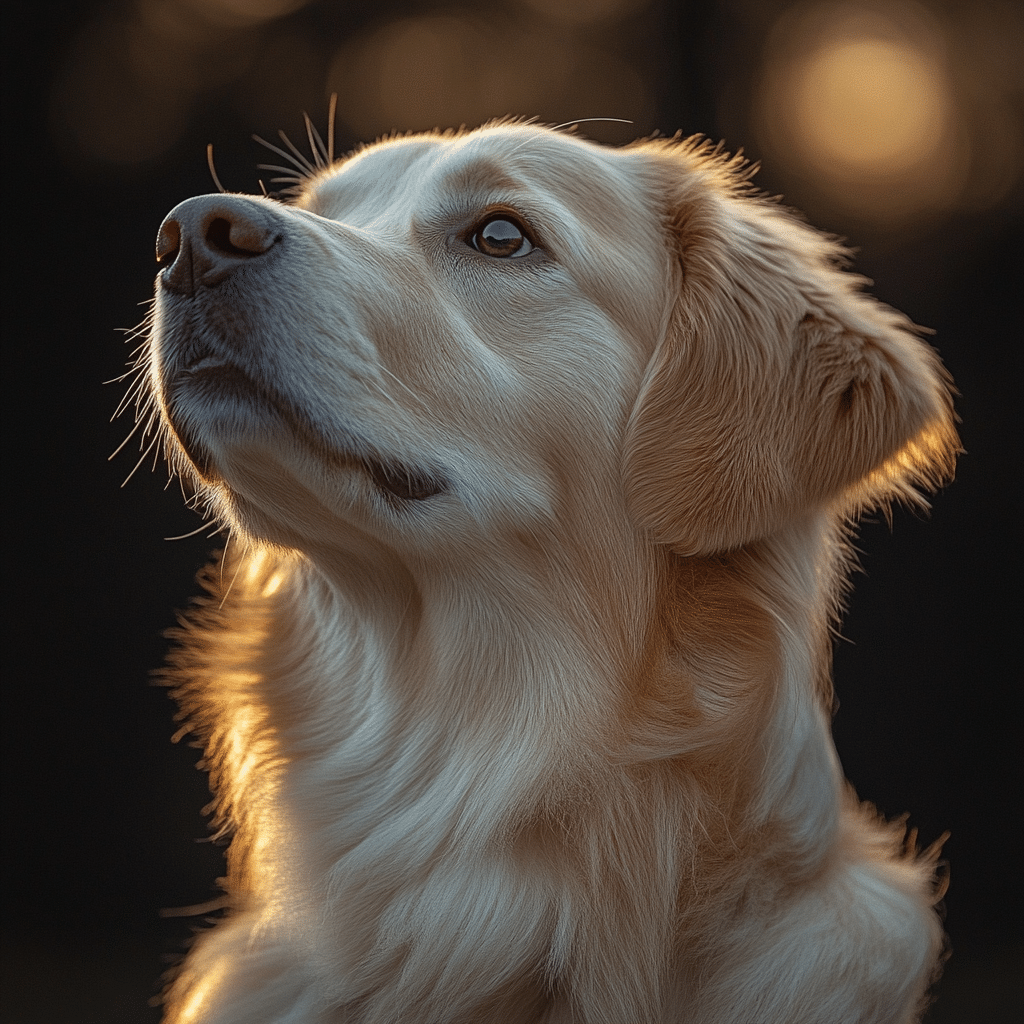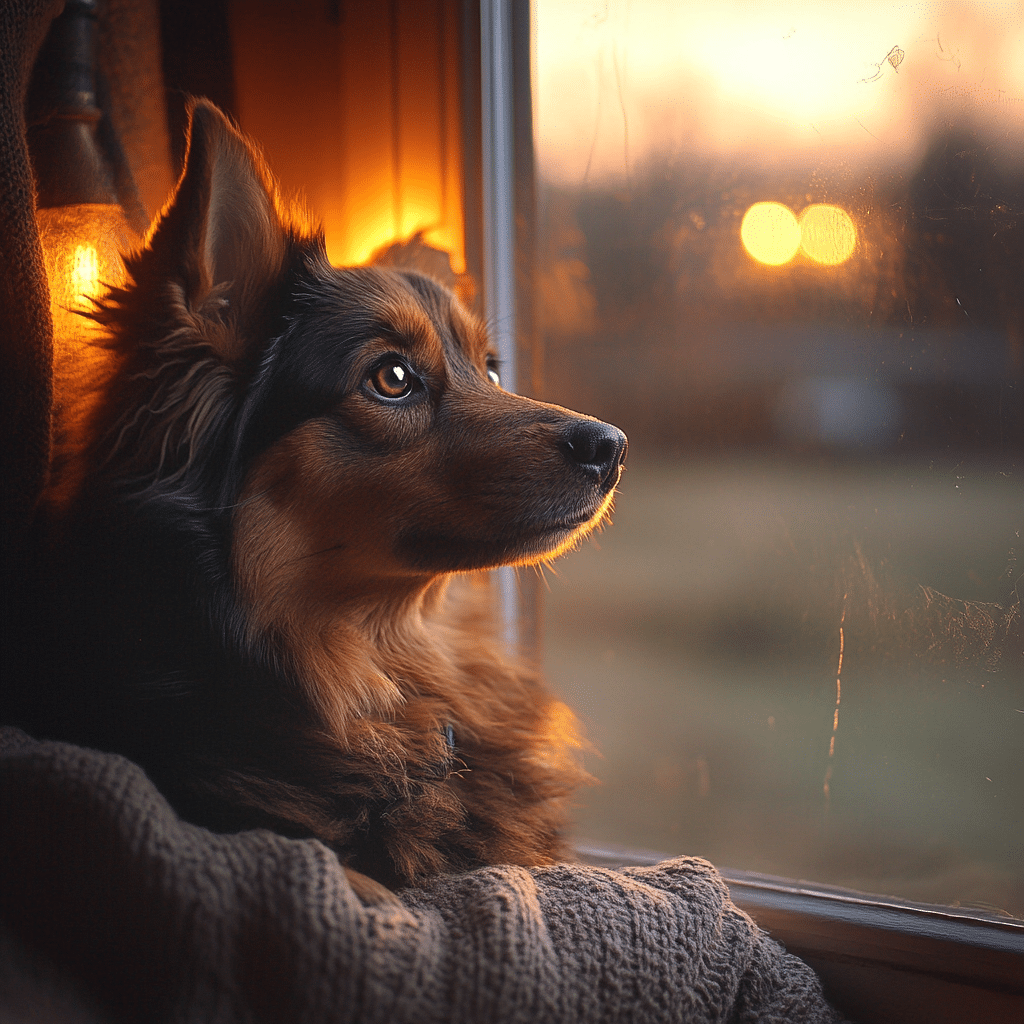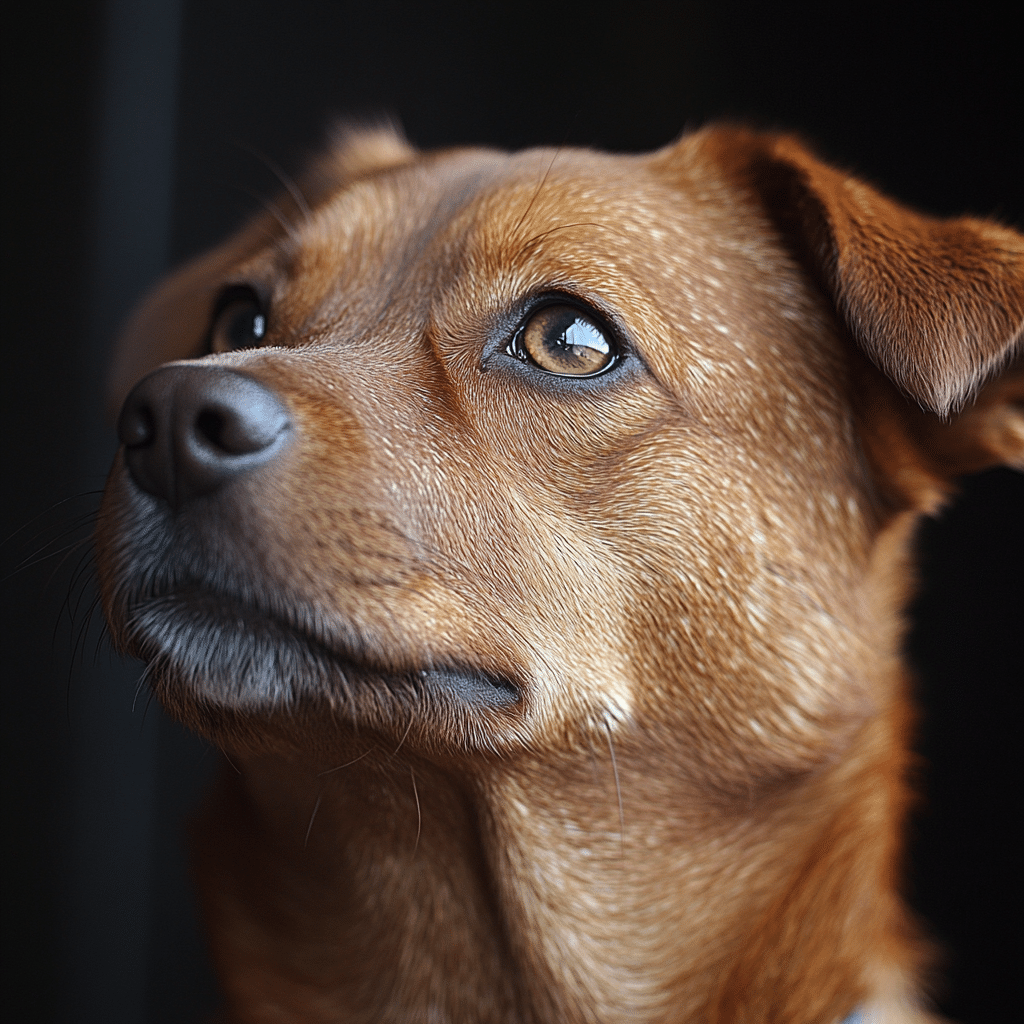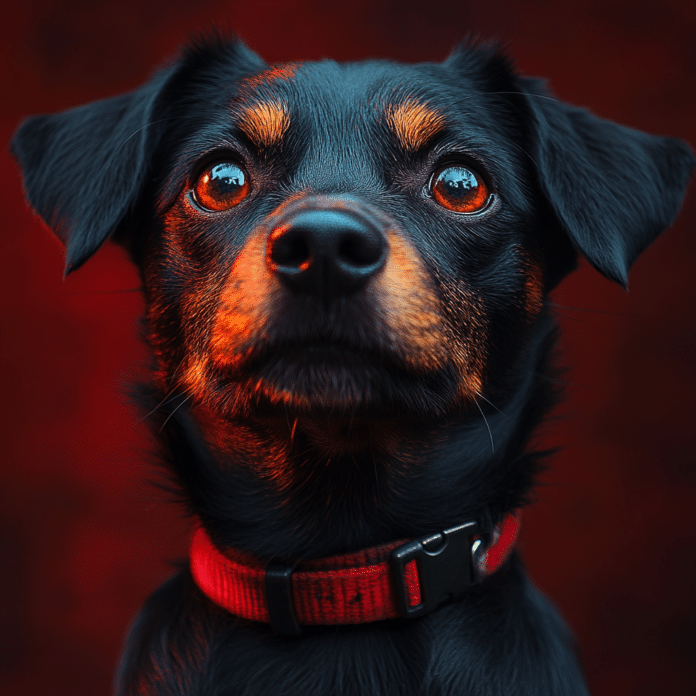When it comes to our furry friends, a question that often comes to mind is, can dogs see in the dark? Many pet owners wonder if their dogs have superior night vision compared to humans. If you’ve ever watched your dog bound through the backyard at twilight or navigate the dimly lit living room, you’re probably curious about their ability to see in low light. Let’s dive into the fascinating world of canine vision and uncover the more surprising facts about how dogs adapt to darker environments.
Top 5 Surprising Facts About Dogs and Their Ability to See in Low Light
1. The Anatomy of a Dog’s Eye
Dogs have an eye structure that’s quite advantageous for low-light conditions. Unlike humans, dogs boast a higher number of rod cells in their retinas. These rod cells are sensitive to dim light and are essential for night vision. Additionally, dogs have a special reflective layer behind their retinas called the tapetum lucidum. This layer acts like a mirror, amplifying the light that enters their eyes and enhancing their ability to see better in the dark. Research conducted by brands like Purina sheds light on how this adaptation supports canines during hunting and nocturnal activities.
2. The Role of the Tapetum Lucidum
This reflective layer isn’t just a neat trick; it plays a crucial role in a dog’s night vision. When light hits the retina, it reflects off the tapetum, giving the photoreceptors a second chance to capture that light. Essentially, this doubles a dog’s ability to see well in dim conditions. Leading researchers at the University of California, Davis, have observed that breeds like Greyhounds and German Shepherds tend to benefit the most from this feature, showcasing their remarkable night vision.
3. Color Perception in Low Light
While dogs excel in dark conditions, their experience of color is different from ours. Dogs have dichromatic vision, meaning they mainly see shades of blue and yellow, while red and green shimmer in muted tones. However, when it comes to low-light environments, this fact isn’t necessarily crucial. Their enhanced sensitivity to light largely overshadows their limited color vision. Findings from various dog training facilities reveal that dogs can proficiently track and respond to movement and shapes even at night, effectively interpreting their dark surroundings.
4. Behavioral Adaptations for Night Vision
Dogs are naturally predisposed to do well in low light, largely due to their ancestors being nocturnal hunters. This instinct influences how they act in their surroundings. Studies from the Animal Behavior Society have shown that many dog breeds become more alert and attuned when in dim settings. These behavioral adaptations allow dogs to utilize their superior night vision to navigate more effectively, ensuring they can thrive when the sun goes down.
5. Limitations of Canine Night Vision
Despite dogs’ remarkable night vision compared to humans, they have their limitations. Canines aren’t truly nocturnal animals and rely on some light to function properly. Unlike creatures such as owls, dogs cannot see in total darkness. This key distinction is vital for dog owners to grasp, especially those who might incorrectly assume their pets can see flawlessly when the lights go out. Vets often advise that while a dog can navigate well during twilight or ambient light, total darkness can hinder their movement and safety.

Can Dogs Really See in Total Darkness?
Many folks mistakenly think that dogs can stroll around freely in pitch-black conditions. The truth is, dogs still need a bit of light to make sense of their surroundings. When we stack their abilities against other species, a clearer picture emerges. Admittedly, certain animals like cats come equipped with even more advanced adaptations for thriving in darker spaces, showcasing how evolution has tailored various creatures for survival in darkness.
What Other Animals Can See Well in the Dark?
Outside of our beloved canines, a variety of animals have honed their night vision skills. For instance, owls possess large eyes and a massive ratio of rod cells, which allows them to see exceptionally well under minimal light. On the ocean’s dark depths, several fish species have evolved to thrive in utter darkness, utilizing adaptations that differ strikingly from those seen in dogs. Understanding these diverse adaptations across the animal kingdom underscores the creative ways life has evolved to face the unseen challenges that night brings.

Exploring the Connection: Can Dogs See in the Dark & Their Bond with Humans
A dog’s knack for navigating the dark extends far beyond biology; it strengthens the bond shared with their human companions. Dogs often tag along on nighttime walks or outdoor adventures, where their enhanced senses instill a sense of security. Their ability to see well in low light not only aids navigation but also fosters trust and companionship between pet and owner.
In many ways, these nighttime excursions draw on your dog’s inherited survival skills, weaving particularly rich experiences into your relationship. Light and darkness transform from mere conditions into shared memories, further strengthening the bond that exists between you and your canine companion.
When pondering whether dogs can see in the dark, we uncover an interesting blend of biology, behavior, and companionship. By realizing and appreciating their evolved adaptations, we can deepen our connection with these remarkable animals and honor the impressive journey they’ve taken over countless generations. Every moment spent with your dog, whether in light or shadow, reinforces an enduring partnership that benefits both species.
For owners curious about their furry friends’ nighttime capabilities, it’s essential to remember that while dogs can see in the dark, they still need some light to perceive their environment clearly. Understanding this will help foster a safer and richer companionship. And remember, the next time you and your dog enjoy a moonlight stroll, you’re not just enjoying the night; you’re participating in a beautiful legacy of adaptation and mutual admiration.
If you’re curious about the afterlife of pets, you can consider reading about whether dogs go to heaven to explore what happens to our beloved companions after this life. It’s a topic that often sparks deep conversations and reflection.
This article aims to shine a light on your understanding of canine night vision, offering insights that can help deepen your relationship with your dog. So, the next time someone asks, can dogs see in the dark? you’ll not only have an answer, but a deeper appreciation for these beloved companions.
Can Dogs See in the Dark: Surprising Facts You Need to Know
It’s All in Their Eyes
Ever find yourself wondering, can dogs see in the dark? Well, the truth is, while dogs are not nocturnal creatures like cats, they do possess some impressive night vision. This is largely thanks to a special reflective layer in their eyes called the tapetum lucidum. This nifty adaptation enhances their ability to detect light in low conditions, making them far better at navigating the night than us humans. In fact, some canine lovers have even turned the spotlight on their furry friends’ abilities by sharing profound thoughts about their pets, including deep reflections on life after death, like whether do dogs go to heaven after they’ve roamed this earth.
Doggie Night Adventures
Just because dogs can see better in the dark doesn’t mean you should let them roam free at night without supervision! Keep in mind that their night vision is just a notch above ours, so they still rely on their sense of smell and hearing to decipher their surroundings. Interestingly, when it comes to their whiskers, these furry antennae help add to their sensory perceptions, acting like a GPS device. There’s also plenty of fun to be had with your dog in nighttime adventures, whether it’s stargazing together in your backyard or heading to cool nighttime events. By the way, if you’re in the Seattle area and looking for fun activities, check out the latest things to do in Seattle this weekend for some evening inspiration!
Can They Really See You at Night?
So, can dogs truly see in the dark? Yes and no. They can see better than we can, but they lack the same color perception. Their world is primarily painted in shades of blue and yellow. It’s fascinating how different their perspective of reality is. And speaking of fascinating, there’s a captivating story out there about the way public figures are often portrayed online, reminding us that image is everything, including a mention of the latest buzz around Pokimane deep fake videos surfacing on the internet—definitely a topic for discussion!
In closing, while they may not be full-on night owls, dogs certainly have some cool tricks up their sleeves—um, paws—when it comes to navigating in low light. Next time you’re pondering, can dogs see in the dark, remember that those adorable eyes of theirs are packed with some serious night-vision magic!




